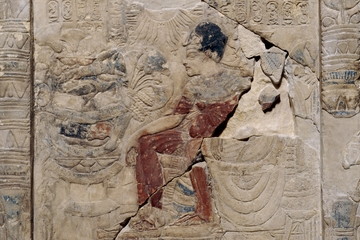You are seeing an unstyled version of this site. If this is because you are using an older web browser, we recommend that you upgrade to a modern, standards-compliant browser such as FireFox [http://www.getfirefox.com/], which is available free of charge for Windows, Mac and Linux.
The Amarna Letters

During the 18th Dynasty (1550-1292 BC), the Egyptian New Kingdom pharaohs campaigned repeatedly in Syria and the Levant and established political control over much of the region. As a result of these conquests, the rulers of Levantine city-states sent letters written in the cuneiform script on clay tablets to the Egyptian pharaohs. So, too, did the kings of the other great geo-political powers of the time (e.g., Assyria, Babylonia, Hatti, Mittani). Beginning in the 19th century AD, local farmers and, later, archaeologists working at the site of the one-time Egyptian capital of Akhetaten (modern Tell el-Amarna) discovered remnants of this correspondence, mostly dating to the reigns of Amenhotep III (1390-1353 BC) and his son and successor Akhenaten (1353-1336 BC). Today, the corpus of cuneiform texts known as "the Amarna letters" comprises 346 letters (one actually found at Tell el-Hesi) and four administrative lists (28 scholarly and literary texts were found with these archival texts and probably used in the training of the scribes).
The online edition of the Amarna Letters aims to make transliterations, translations, and glossaries of the letters and administrative texts available to both scholars and the wider public. At this time, the project comprises 305 texts. This number represents the correspondence to and from Egypt's client kings in the Levant. In our next and final update, we will add the correspondence to and from the so-called "Great Powers" as well as the administrative texts related to this correspondence.
You can view the project's content here [./pager].
Supported by a Catalyst Award from Johns Hopkins University